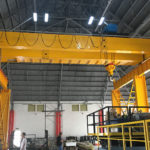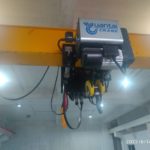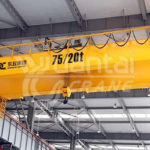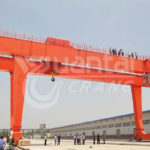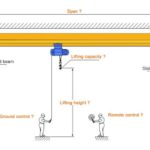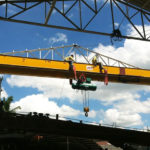Crane Installation Overview
A crane is a type of heavy machinery that can lift and move heavy objects. Cranes are often used in the construction, manufacturing, and transportation industries. Installing a crane requires careful planning, preparation, and execution. Crane installation is a complex and delicate operation that requires careful planning, preparation and execution. Crane installation involves transporting, assembling, positioning and securing the crane components on the site. The crane installation process can vary depending on the type, size and configuration of the crane, as well as the site conditions and requirements.
Choosing the Right Type of Crane
The first step of crane installation is to choose the right type of crane for the project. There are different types of cranes, such as overhead cranes, gantry cranes, and jib cranes. Each type of crane has its advantages and disadvantages, depending on the site conditions, the load capacity, the height, and the mobility. The crane selection should be based on a thorough analysis of the project requirements and the site constraints.
Crane Site Survey and Assessment
The second step of crane installation is to prepare the site for the crane. This may involve clearing the area, levelling the ground, laying the foundation, and securing the utilities. The site preparation should ensure that the crane has enough space to operate safely and efficiently. The site preparation should also comply with the local codes and regulations regarding crane operation.
The site survey also helps to determine the optimal location and orientation of the crane, as well as the required crane capacity, boom length, counterweight and outrigger configuration. The site survey should be done by a qualified engineer or crane operator who can evaluate the site conditions and design a suitable crane installation plan.
Assemble the Crane Components
The third step of crane installation is to assemble the crane components on the site. This involves unloading, lifting, connecting and bolting the crane components together according to the manufacturer’s instructions and specifications. The assembly process should be supervised by a qualified engineer or crane operator who can ensure that the components are aligned, levelled and secured properly. The assembly process should also follow safety procedures and precautions, such as wearing protective equipment, using appropriate tools and equipment, checking for any loose or missing parts, and maintaining a safe distance from the crane components.
Position the Crane on the Site
The fourth step of crane installation is to position and stabilize the crane on the site. This involves moving the crane to its desired location and orientation, extending and setting up the outriggers or crawler tracks, levelling the crane base, attaching and adjusting the counterweights, and testing the crane functions and controls. The positioning and stabilization process should be done by a qualified engineer or crane operator who can ensure that the crane is balanced, stable and ready for operation. The positioning and stabilization process should also follow safety procedures and precautions, such as checking for any overhead or underground hazards, ensuring adequate clearance around the crane, verifying the load chart and capacity limits, and conducting a pre-operational inspection.
Operate the Crane
The fifth step of crane installation is to operate the crane according to the project requirements. This involves lifting, moving and placing the loads using the crane boom, hook, sling and rigging devices. The operation process should be done by a certified crane operator who can operate the crane safely and efficiently. The operation process should also follow the safety procedures and precautions, such as communicating with the signal person or spotter, monitoring the wind speed and direction, observing the load weight and radius indicators, avoiding any sudden or jerky movements, and following the emergency procedures in case of any malfunction or accident.
Maintain the Crane
The sixth step of crane installation is to maintain the crane. This involves inspecting the crane regularly, repairing any damages or defects, and replacing any worn-out parts. The maintenance process should follow the maintenance schedule and guidelines provided by the manufacturer. The maintenance process should also follow the quality standards and regulations for crane operation.
Brief Summary of Crane Installation Procedure
1. Pre-Installation Planning:
- a. Site Preparation: Conduct a site survey to assess ground conditions, access routes, and environmental factors.
- b. Verify that the crane specifications match the project requirements.
- c. Transport the crane components to the site using approved transportation methods.
- d. Ensure all necessary equipment and personnel are available for the installation.
2. Assembly of Crane Components:
- a. Assemble the crane components according to the manufacturer’s instructions.
- b. Ensure that all bolts, nuts, and connections are properly tightened.
- c.Electrical and Mechanical Connection: Connect the crane to the power source following electrical safety standards. Check all control systems and emergency shutdown procedures.
- d. Verify the integrity of structural components.
3. Inspection and Testing:
- a. Test all crane functions, including hoisting, lowering, slewing, and trolley movements.
- b. Ensure that all safety features and limit switches are operational.
- c. Conduct a final inspection before commissioning.
4. Post-Installation Review:
- a. Conduct a review of the installation process to identify any lessons learned or areas for improvement.
- b. Address any issues promptly and make necessary adjustments.
(Note: Crane installation is a critical task that requires careful planning, preparation and execution. By following these general steps and best practices, you can ensure a safe and successful crane installation.)
